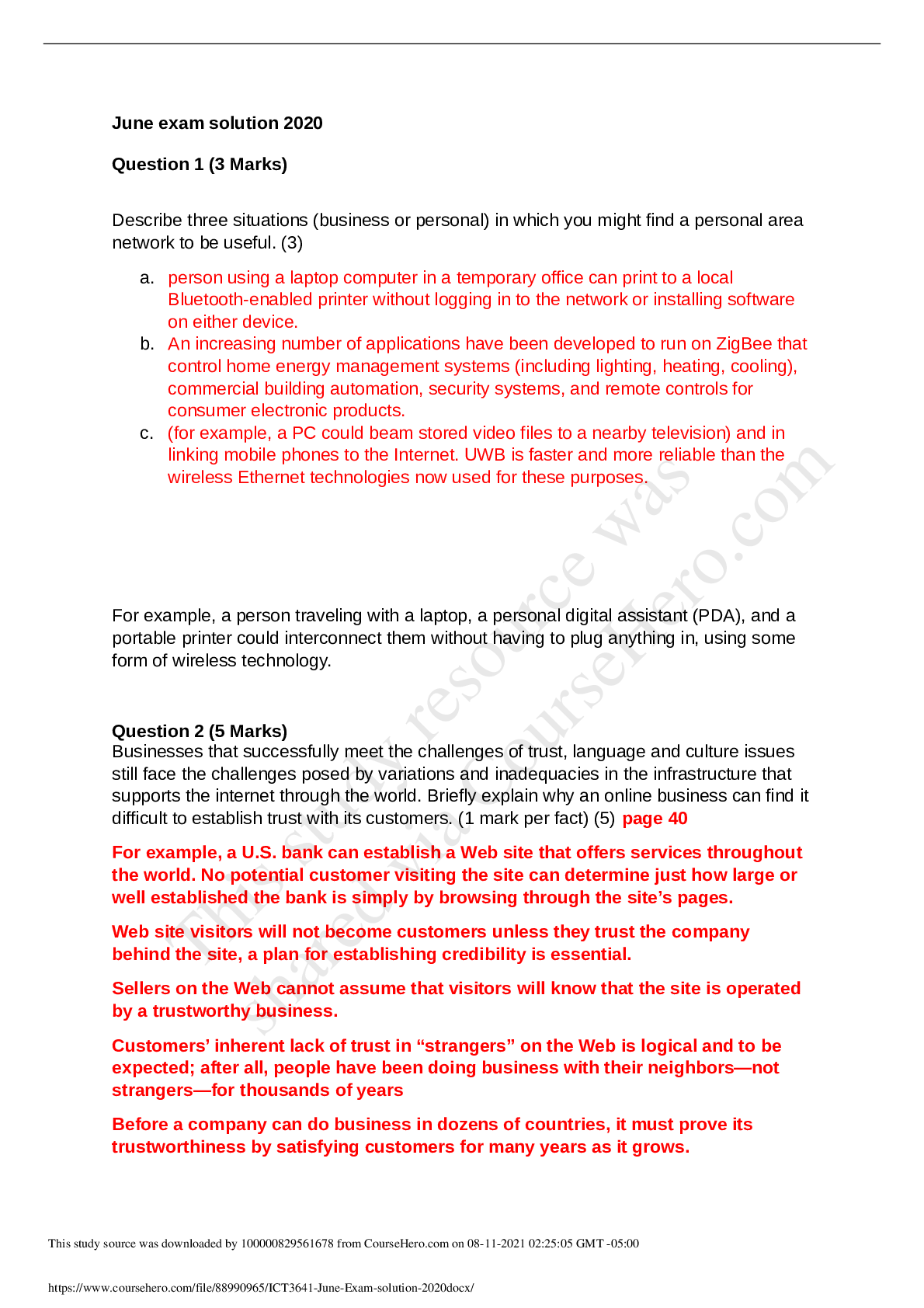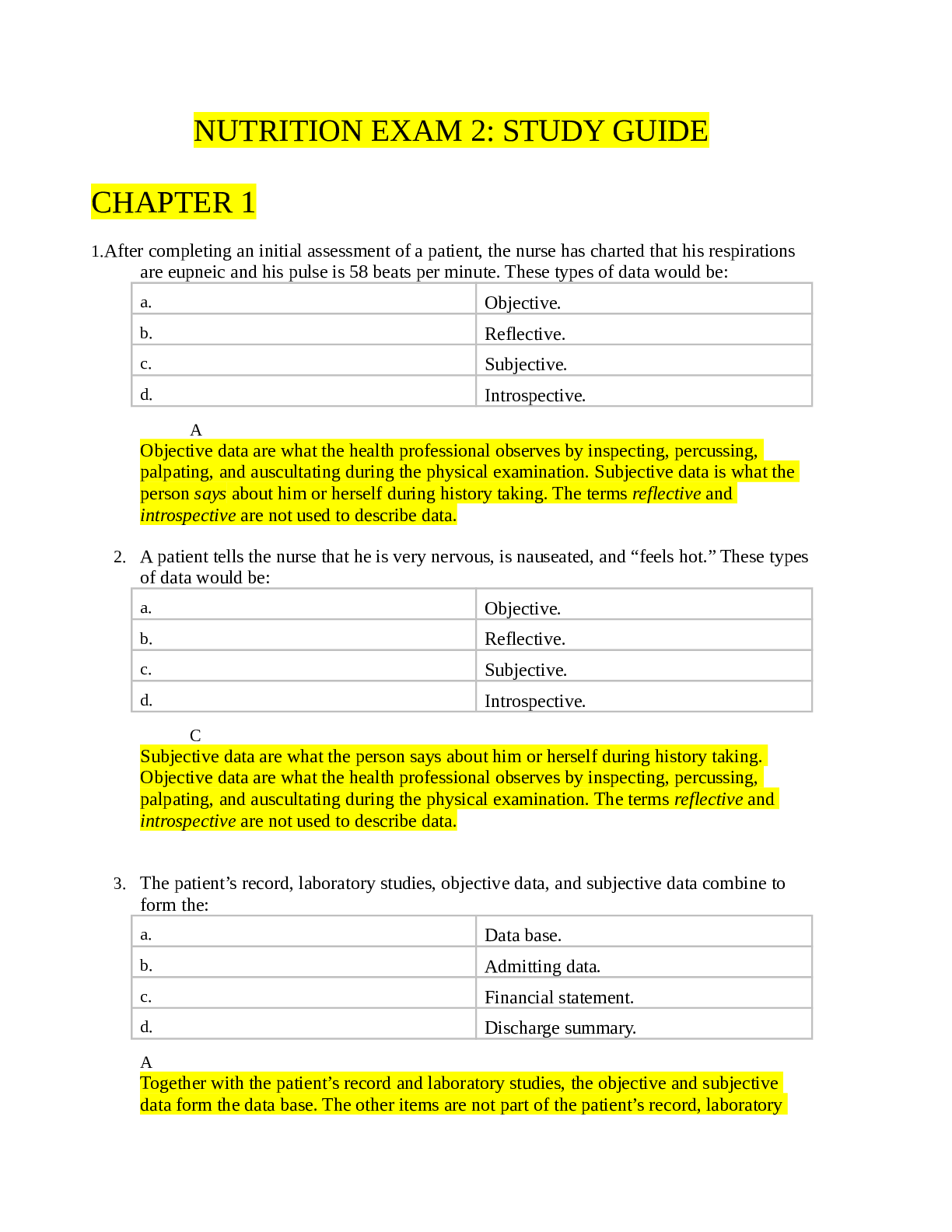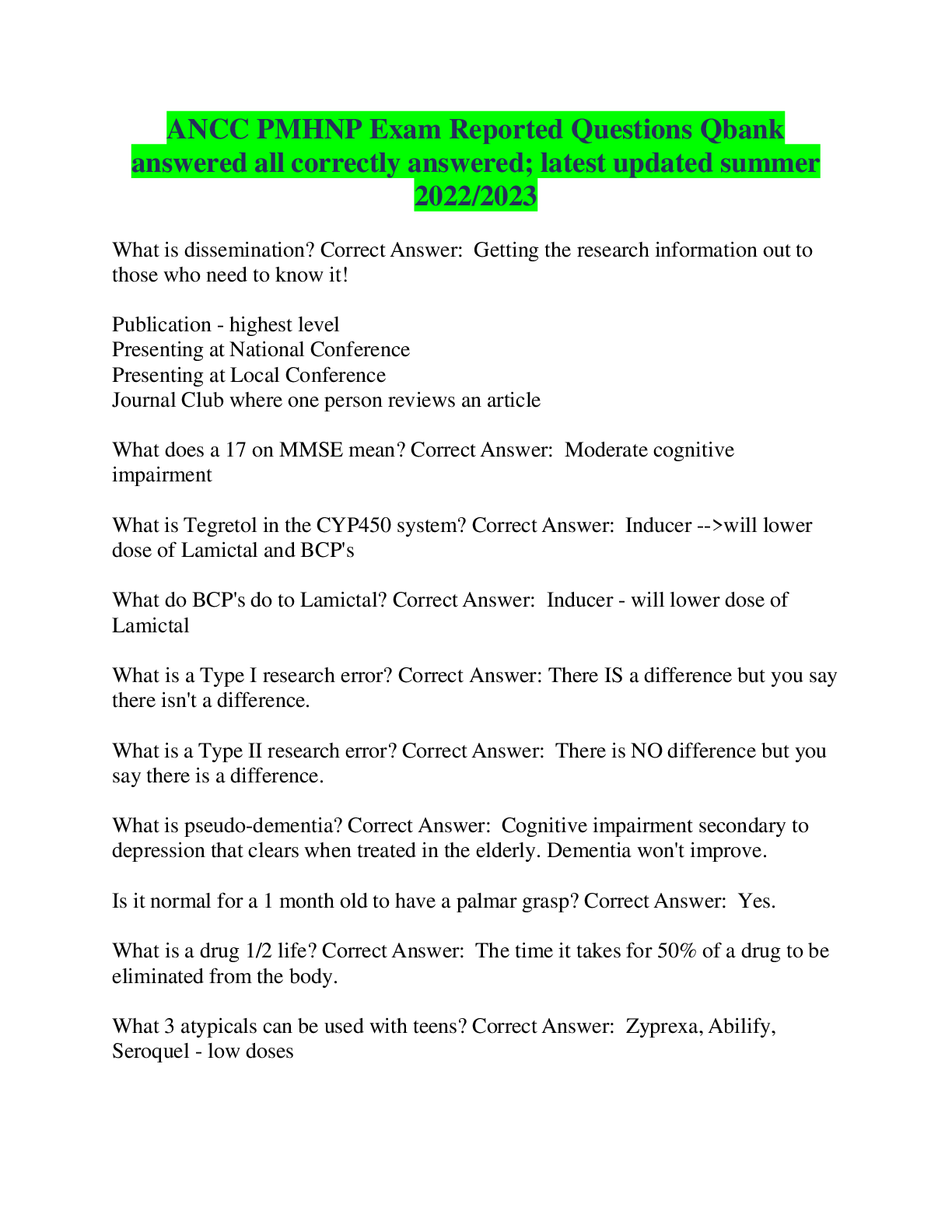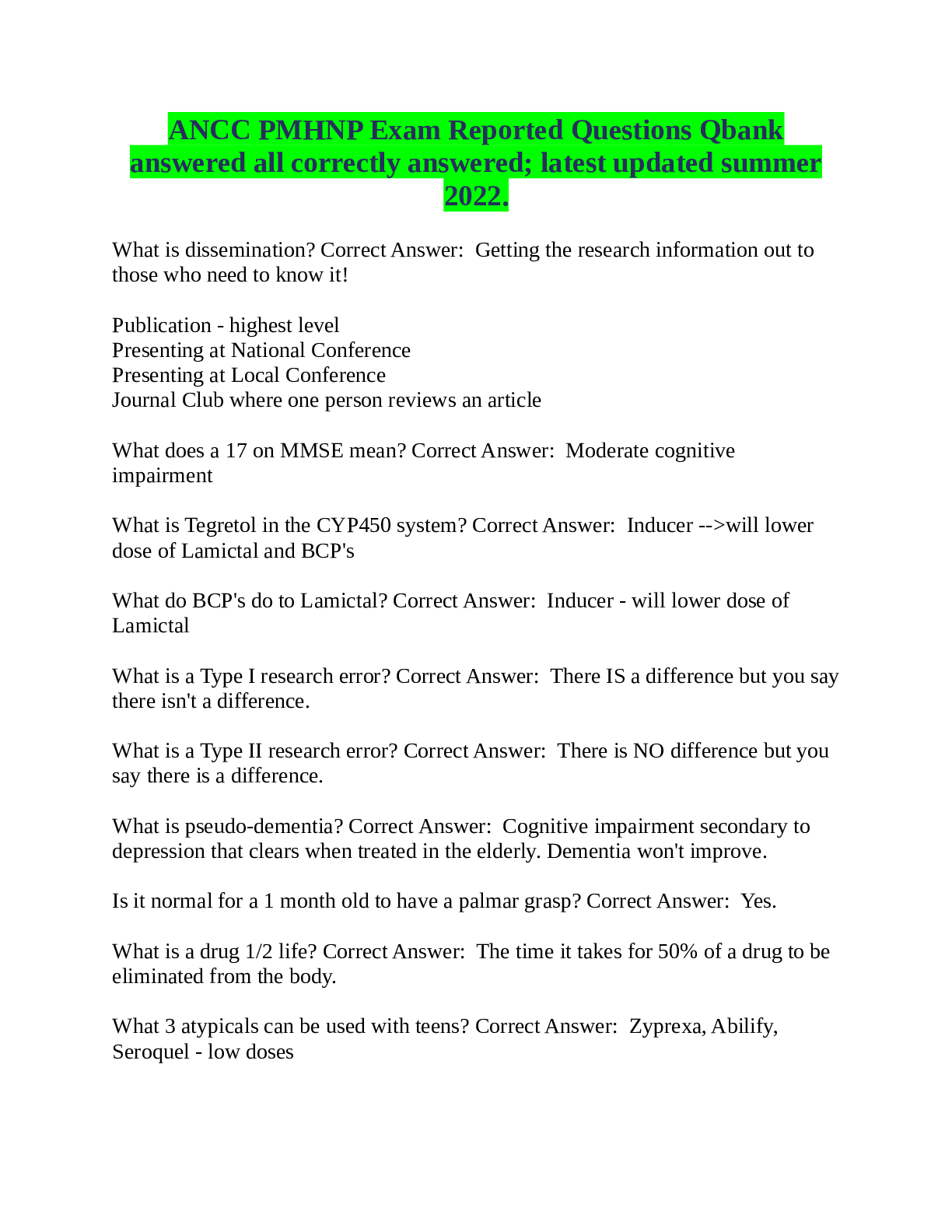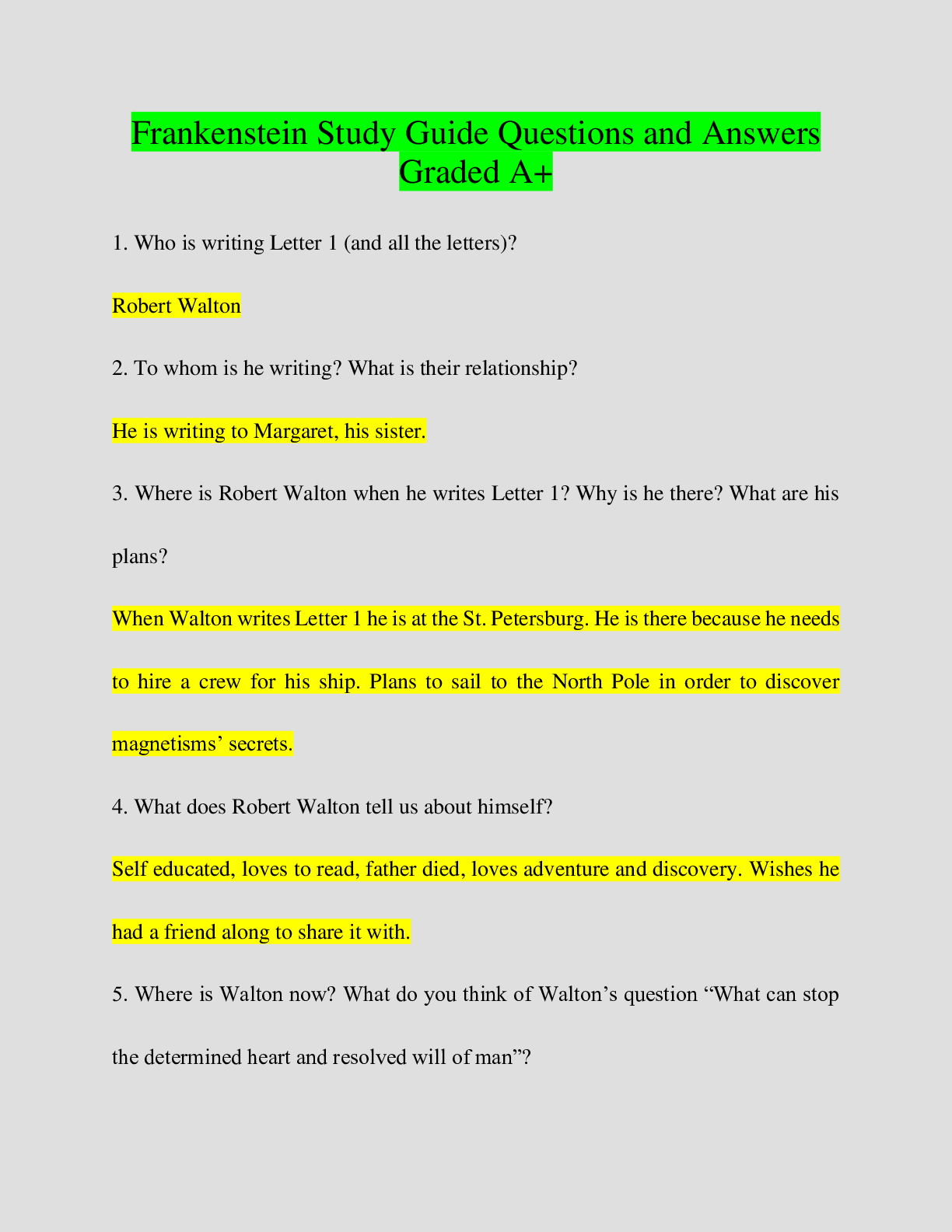*NURSING > EXAM REVIEW > Chapter 15:Health Assessment Exam 2: Study Guide Questions All correctly Answered and with Explanati (All)
Chapter 15:Health Assessment Exam 2: Study Guide Questions All correctly Answered and with Explanations.
Document Content and Description Below
. When examining the ear with an otoscope, the nurse notes that the tympanic membrane should appear: a. Light pink with a slight bulge. b. Pearly gray and slightly concave. c. Pulled in at the bas... e of the cone of light. d. Whitish with a small fleck of light in the superior portion. B The tympanic membrane is a translucent membrane with a pearly gray color and a prominent cone of light in the anteroinferior quadrant, which is the reflection of the otoscope light. The tympanic membrane is oval and slightly concave, pulled in at its center by the malleus, which is one of the middle ear ossicles. 4. The nurse is reviewing the structures of the ear. Which of these statements concerning the eustachian tube is true? a. The eustachian tube is responsible for the production of cerumen. b. It remains open except when swallowing or yawning. c. The eustachian tube allows passage of air between the middle and outer ear. d. It helps equalize air pressure on both sides of the tympanic membrane. D The eustachian tube allows an equalization of air pressure on each side of the tympanic membrane so that the membrane does not rupture during, for example, altitude changes in an airplane. The tube is normally closed, but it opens with swallowing or yawning. 5. A patient with a middle ear infection asks the nurse, “What does the middle ear do?” The nurse responds by telling the patient that the middle ear functions to: a. Maintain balance. b. Interpret sounds as they enter the ear. c. Conduct vibrations of sounds to the inner ear. d. Increase amplitude of sound for the inner ear to function. C Among its other functions, the middle ear conducts sound vibrations from the outer ear to the central hearing apparatus in the inner ear. The other responses are not functions of the middle ear. 6. The nurse is reviewing the function of the cranial nerves (CNs). Which CN is responsible for conducting nerve impulses to the brain from the organ of Corti? a. I b. III c. VIII d. XI C The nerve impulses are conducted by the auditory portion of CN VIII to the brain. 7. The nurse is assessing a patient who may have hearing loss. Which of these statements is true concerning air conduction? a. Air conduction is the normal pathway for hearing. b. Vibrations of the bones in the skull cause air conduction. c. Amplitude of sound determines the pitch that is heard. d. Loss of air conduction is called a conductive hearing loss. A The normal pathway of hearing is air conduction, which starts when sound waves produce vibrations on the tympanic membrane. Conductive hearing loss results from a mechanical dysfunction of the external or middle ear. The other statements are not true concerning air conduction. 8. A patient has been shown to have a sensorineural hearing loss. During the assessment, it would be important for the nurse to: a. Speak loudly so the patient can hear the questions. b. Assess for middle ear infection as a possible cause. c. Ask the patient what medications he is currently taking. d. Look for the source of the obstruction in the external ear. C A simple increase in amplitude may not enable the person to understand spoken words. Sensorineural hearing loss may be caused by presbycusis, which is a gradual nerve degeneration that occurs with aging and by ototoxic drugs, which affect the hair cells in the cochlea. 9. During an interview, the patient states he has the sensation that “everything around him is spinning.” The nurse recognizes that the portion of the ear responsible for this sensation is the: a. Cochlea. b. CN VIII. c. Organ of Corti. d. Labyrinth. D If the labyrinth ever becomes inflamed, then it feeds the wrong information to the brain, creating a staggering gait and a strong, spinning, whirling sensation called vertigo. 10. A patient in her first trimester of pregnancy is diagnosed with rubella. Which of these statements is correct regarding the significance of this in relation to the infant’s hearing? a. Rubella may affect the mother’s hearing but not the infant’s. b. Rubella can damage the infant’s organ of Corti, which will impair hearing. c. Rubella is only dangerous to the infant in the second trimester of pregnancy. d. Rubella can impair the development of CN VIII and thus affect hearing. B If maternal rubella infection occurs during the first trimester, then it can damage the organ of Corti and impair hearing. 11. The mother of a 2-year-old is concerned because her son has had three ear infections in the past year. What would be an appropriate response by the nurse? a. “It is unusual for a small child to have frequent ear infections unless something else is wrong.” b. “We need to check the immune system of your son to determine why he is having so many ear infections.” c. “Ear infections are not uncommon in infants and toddlers because they tend to have more cerumen in the external ear.” d. “Your son’s eustachian tube is shorter and wider than yours because of his age, which allows for infections to develop more easily.” D The infant’s eustachian tube is relatively shorter and wider than the adult’s eustachian tube, and its position is more horizontal; consequently, pathogens from the nasopharynx can more easily migrate through to the middle ear. The other responses are not appropriate. 12. A 31-year-old patient tells the nurse that he has noticed a progressive loss in his hearing. He says that it does seem to help when people speak louder or if he turns up the volume of a television or radio. The most likely cause of his hearing loss is: a. Otosclerosis. b. Presbycusis. c. Trauma to the bones. d. Frequent ear infections. A Otosclerosis is a common cause of conductive hearing loss in young adults between the ages of 20 and 40 years. Presbycusis is a type of hearing loss that occurs with aging. Trauma and frequent ear infections are not a likely cause of his hearing loss. 13. A 70-year-old patient tells the nurse that he has noticed that he is having trouble hearing, especially in large groups. He says that he “can’t always tell where the sound is coming from” and the words often sound “mixed up.” What might the nurse suspect as the cause for this change? a. Atrophy of the apocrine glands b. Cilia becoming coarse and stiff c. Nerve degeneration in the inner ear d. Scarring of the tympanic membrane C Presbycusis is a type of hearing loss that occurs in 60% of those older than 65 years of age, even in those living in a quiet environment. This sensorineural loss is gradual and caused by nerve degeneration in the inner ear. Words sound garbled, and the ability to localize sound is also impaired. This communication dysfunction is accentuated when background noise is present [Show More]
Last updated: 1 year ago
Preview 1 out of 14 pages

Reviews( 0 )
Document information
Connected school, study & course
About the document
Uploaded On
May 09, 2021
Number of pages
14
Written in
Additional information
This document has been written for:
Uploaded
May 09, 2021
Downloads
0
Views
49

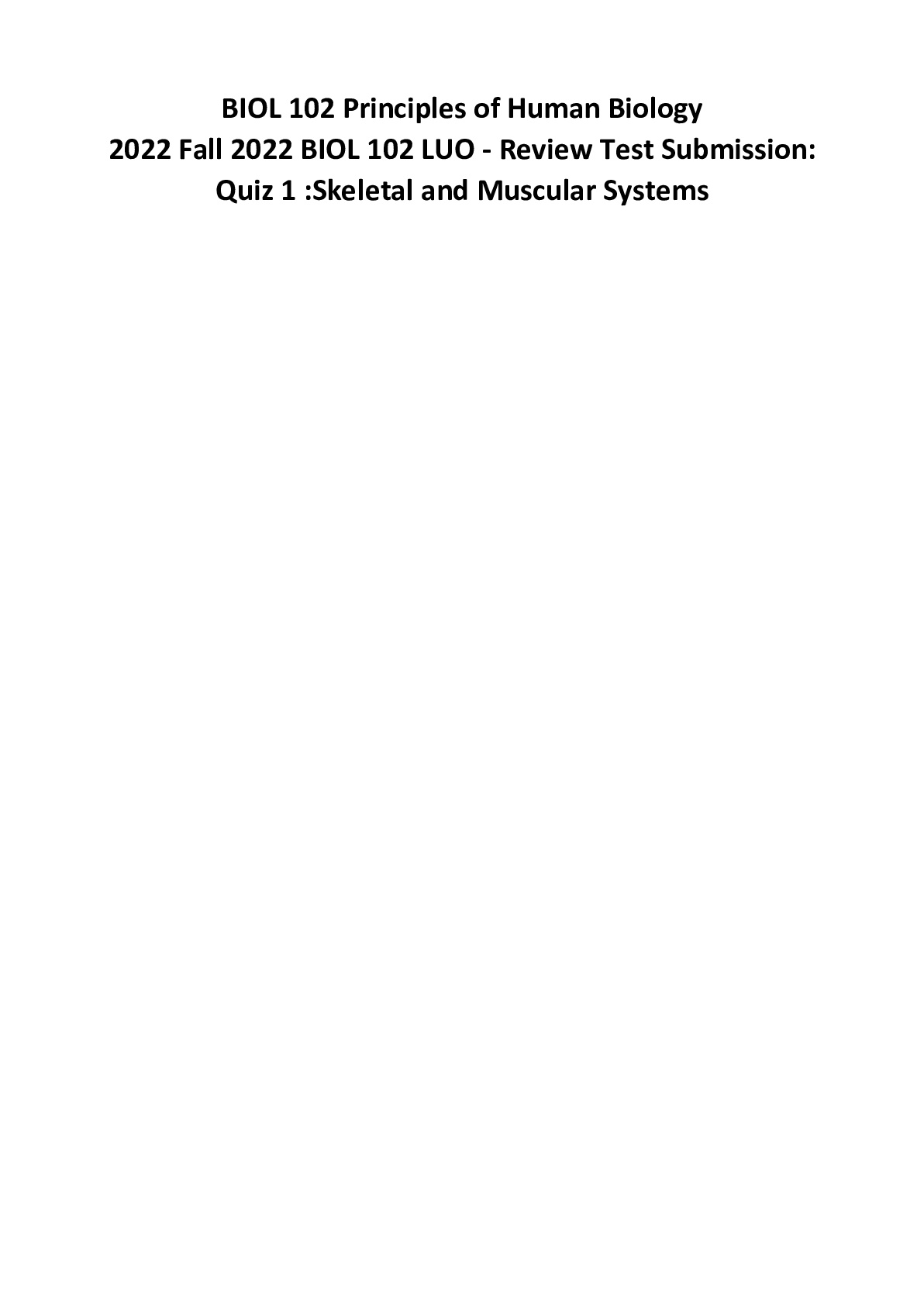
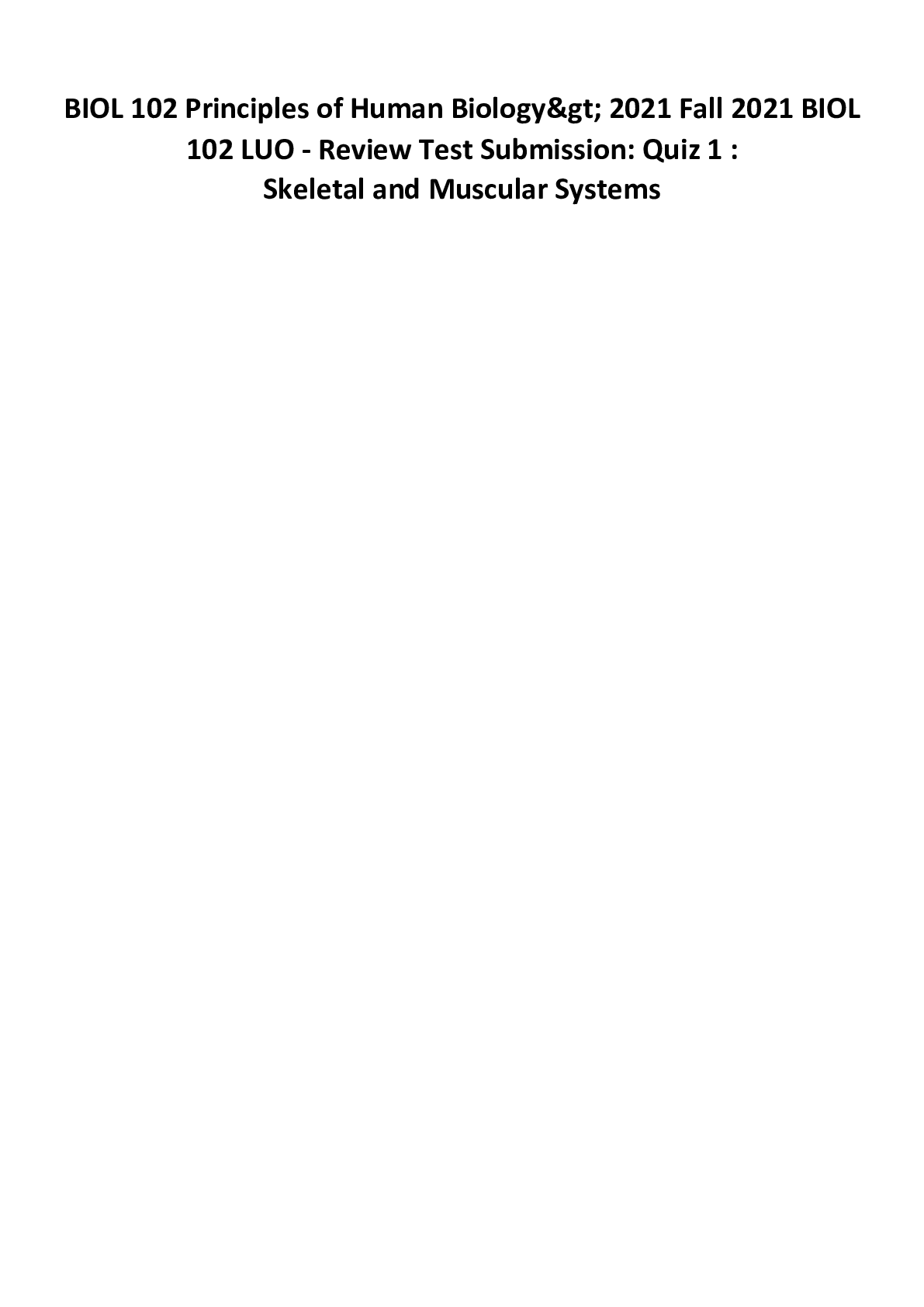
.png)

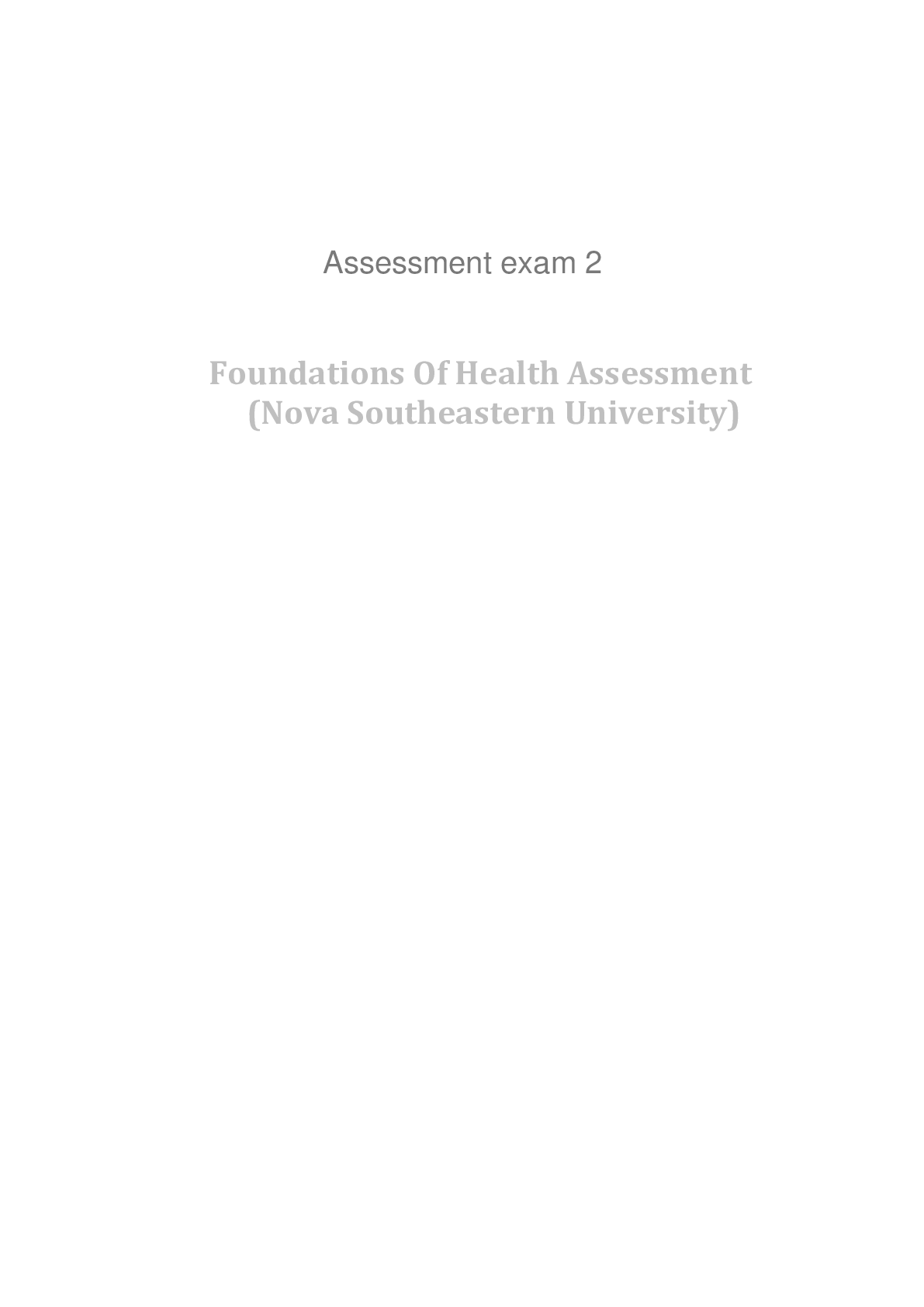
.png)
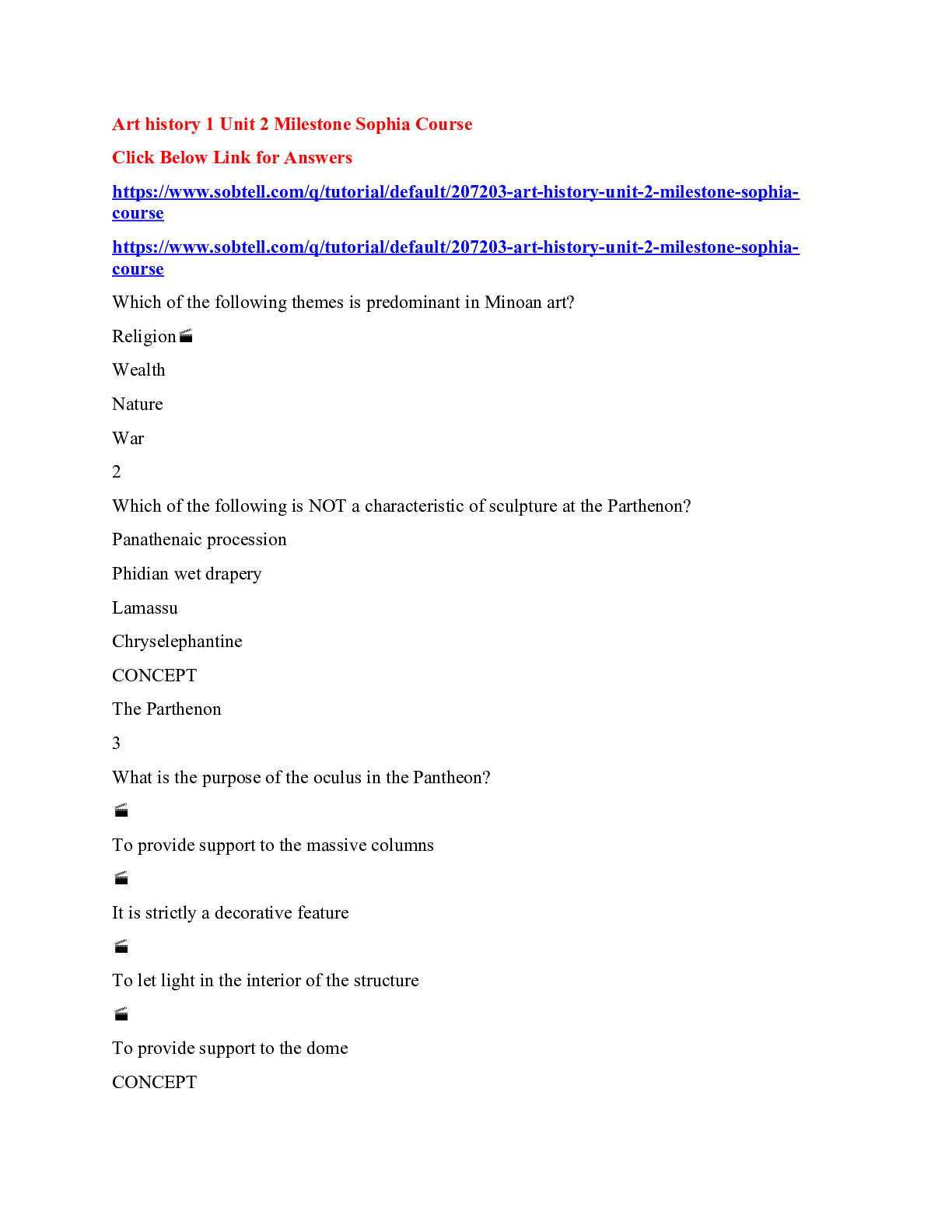




.png)
.png)


